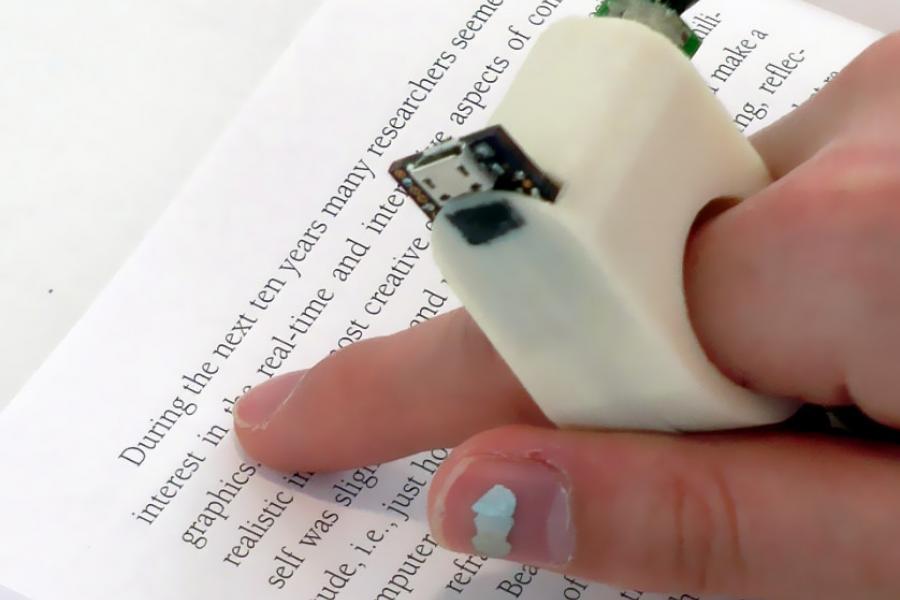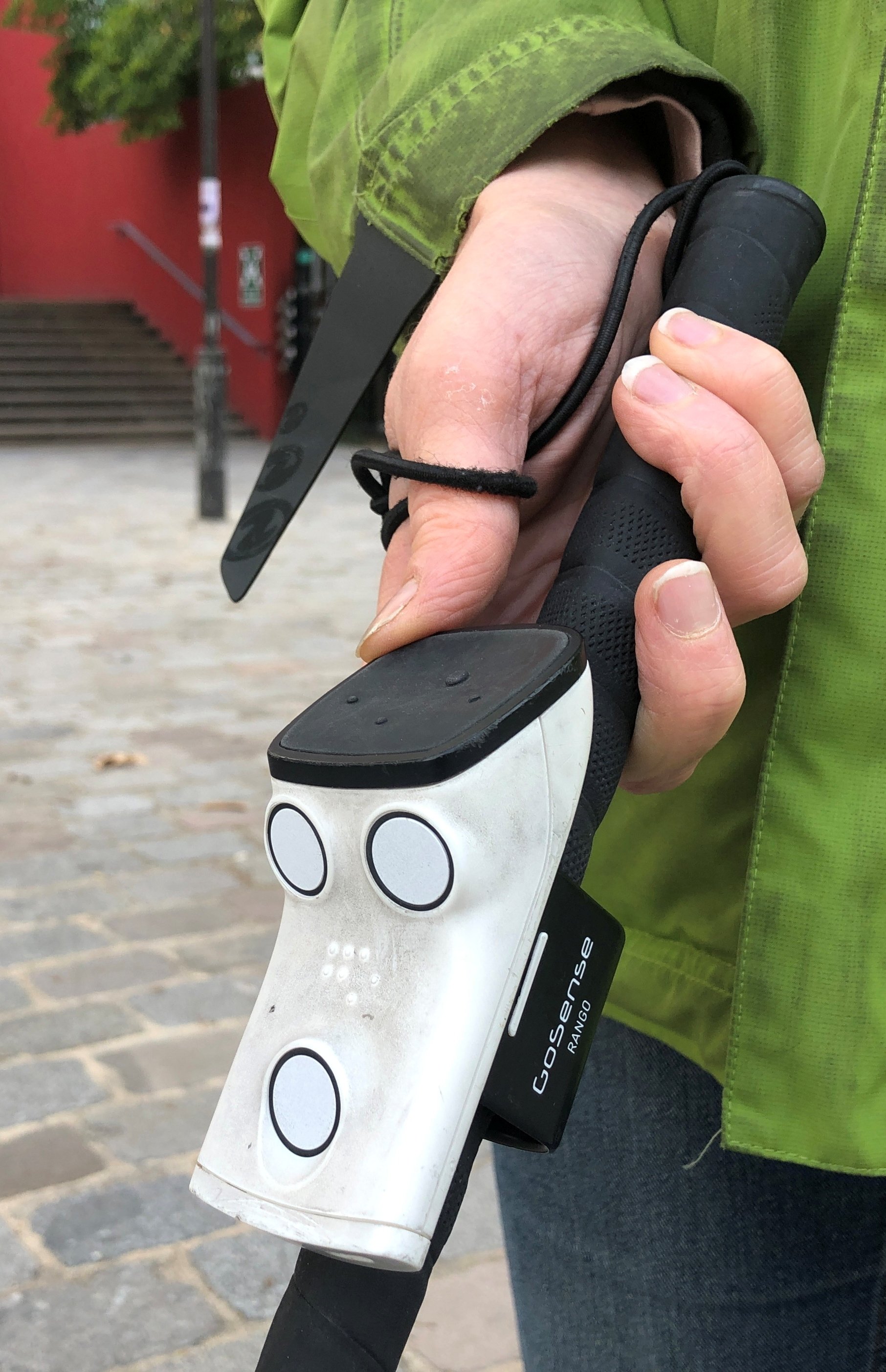Discover Ingenious Devices Developed for the Aesthetically Impaired
The advancement of cutting-edge devices for the visually damaged represents a considerable development in access and self-reliance. Technologies such as clever glasses with AI capacities and mobile applications developed to supply acoustic summaries are reshaping daily experiences for users. In addition, wearable devices that utilize haptic responses boost ecological understanding, while modern-day Braille innovations use new methods to engage with text. As these tools continue to advance, their impact on the lives of those with visual problems increases essential inquiries concerning the future of inclusivity and autonomy in numerous facets of life. What exists ahead in this technical landscape?
Smart Glasses for Navigation
Smart glasses developed for navigation are changing the way visually impaired people communicate with their environment. These advanced gadgets utilize a combination of electronic camera modern technology, artificial knowledge, and acoustic comments to supply real-time information regarding environments. By employing barrier discovery systems, wise glasses can notify individuals to prospective dangers, enabling much safer flexibility in both familiar and unknown settings.
The integration of GPS modern technology even more improves navigating capacities, enabling customers to obtain auditory directions as they move. This hands-free strategy not just cultivates independence yet also encourages visually damaged individuals to navigate urban landscapes with increased confidence. In addition, several smart glasses are geared up with features that identify spots and road signs, supplying contextual information that enhances the customer experience.
In addition, the development of these tools is consistently progressing, with companies functioning to boost the precision of things acknowledgment and expand the variety of navigational functions. As clever glasses come to be more accessible and affordable, they hold the potential to significantly transform every day life for visually damaged customers. Eventually, these cutting-edge tools represent an important action towards inclusivity, offering improved flexibility and a higher sense of freedom for people browsing the world around them.

Mobile Apps for Daily Living
How can mobile applications enhance the day-to-days live of aesthetically impaired individuals? Mobile applications are reinventing the method aesthetically damaged users navigate their settings, manage everyday tasks, and gain access to information. These applications offer important assistance via numerous capabilities, cultivating independence and enhancing lifestyle.
Numerous innovative mobile apps are designed particularly for day-to-day living. For example, applications like Be My Eyes attach visually impaired individuals with sighted volunteers through video clip telephone calls, enabling them to receive real-time aid with tasks such as reading tags or navigating unfamiliar spaces. Seeing AI, created by Microsoft, makes use of synthetic intelligence to explain surroundings, read text, and recognize items, properly transforming a smart device right into an effective tool for day-to-day help.
Furthermore, navigation apps tailored for the visually damaged, such as Aira and BlindSquare, use audio-based instructions and ecological info, allowing individuals to traverse their surroundings securely and confidently. Beyond navigation and prompt assistance, mobile applications likewise sustain organization and job monitoring, with features that assist customers set pointers, develop to-do lists, and track appointments. In summary, mobile applications offer as important resources, equipping aesthetically impaired individuals to lead more independent and satisfying lives.
Wearable Technologies for Assistance
Empowerment via innovation is progressively obvious in the world of wearable gadgets designed to help visually impaired individuals. These ingenious tools incorporate effortlessly right into life, enhancing navigating and giving necessary feedback to customers. For instance, clever glasses equipped with video cameras can check out and recognize faces message aloud, allowing customers to communicate even more confidently in social and expert settings.
An additional significant innovation is the use of haptic responses systems in wearable gadgets. These systems make use of vibrations or other tactile signals to communicate info about the individual's atmosphere, such as obstacles or modifications in terrain, enhancing flexibility and safety and security. Wearable modern technologies additionally consist of wristbands that attach to smart devices, signaling users to notices through subtle resonances, hence boosting connectivity without dependence on visual signs.
As these modern technologies continue to evolve, they are not only enhancing self-reliance for visually damaged individuals however also cultivating a higher feeling of inclusion in culture. By connecting the gap in between difficulties dealt with in everyday living and the capacity for freedom, wearable modern technologies work as crucial tools in the pursuit for equal rights visit the site and empowerment for those with aesthetic disabilities.
Audio Summary Tools
Sound description tools play a crucial duty in improving access for this hyperlink visually impaired people, providing them with the capability to involve with aesthetic media. Braille displays and notetakers. These devices provide narrated descriptions of essential visual elements in movies, television shows, and live performances, guaranteeing that users can fully comprehend the context and emotions communicated via visuals
Sound summary can be incorporated right into different systems, including streaming solutions, cinema screenings, and live theater. Lots of prominent streaming solutions now consist of audio description as an access attribute, allowing visitors to pick it quickly. In addition to mainstream media, specialized apps also exist, providing audio descriptions for art exhibits, galleries, and other social events.
The effectiveness of audio description depends upon the ability of the storytellers, who have to convey aesthetic information succinctly without diminishing the initial audio. Innovations in this field are also paving the means for even more tailored experiences, where individuals can adjust the degree of detail and pacing according to their preferences.
Braille Innovations and Devices
Braille tools and technologies have considerably transformed the way aesthetically damaged individuals connect with message and info. Modern improvements have led to the development of flexible tools that enhance proficiency and independence among individuals.
In addition, portable Braille notetakers combine conventional Braille input with contemporary capabilities, helping with note-taking, organizing, and file modifying on the move. AI-powered visual aids. These portable gadgets commonly include text-to-speech abilities, connecting the gap in between Braille and acoustic details
In enhancement, cutting-edge Braille printers have arised, enabling users to create Braille tags, documents, and instructional products successfully. This ease of access fosters better involvement in instructional and expert environments, eventually advertising inclusivity.
Additionally, study right into clever Braille innovations remains to broaden. Devices that include expert system are being checked out to go offer real-time navigation support and contextual details, enhancing the individual experience in varied settings. Generally, these advancements show a commitment to empowering aesthetically damaged people with innovation, guaranteeing they can quickly gain access to and involve with the world around them.

Final Thought
The improvement of ingenious tools for the visually impaired significantly boosts independence and high quality of life. Smart glasses, mobile applications, wearable modern technologies, audio description devices, and Braille advancements jointly equip individuals by supplying necessary navigation assistance, environmental awareness, and boosted analysis experiences. These technologies not just foster higher addition but additionally promote freedom in everyday tasks, eventually adding to an extra fair and obtainable culture for visually impaired individuals. Proceeded advancement in this field holds assurance for additional enhancements.
As smart glasses become much more obtainable and budget-friendly, they hold the possible to considerably transform day-to-day life for aesthetically damaged users. Mobile applications are revolutionizing the means visually impaired customers browse their atmospheres, take care of everyday tasks, and access information. Apps like Be My Eyes link visually impaired individuals with sighted volunteers using video phone calls, allowing them to obtain real-time assistance with jobs such as reviewing tags or navigating unknown areas.In addition, navigation apps tailored for the visually damaged, such as Aira and BlindSquare, offer audio-based instructions and ecological info, allowing users to traverse their surroundings securely and confidently.The innovation of cutting-edge devices for the aesthetically damaged significantly enhances self-reliance and high quality of life.